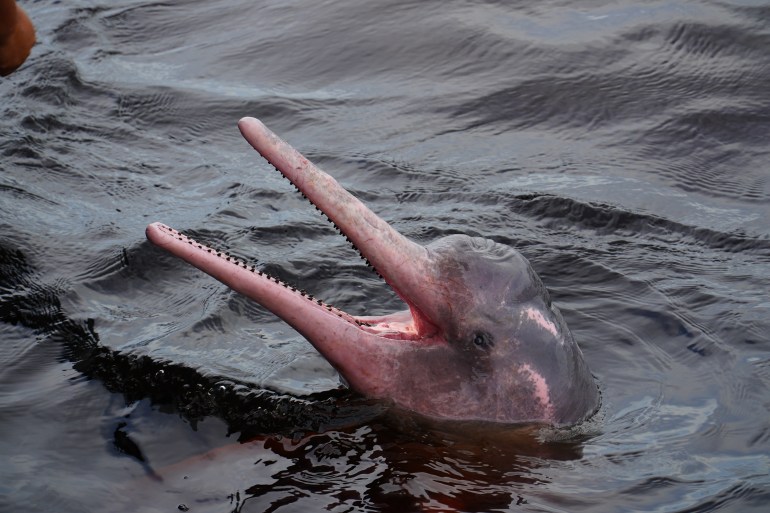New evidence shows how whales and dolphins echolocate?

Whales and dolphins have no external ears and rely on a technology called echolocation to navigate and hunt in the complete darkness of the deep ocean. These animals make high-pitched sounds that bounce off and back onto objects, allowing them to orient themselves. surroundings.
These marine mammals are able to do this because the soft tissues near and inside their skulls and blowholes are asymmetrical, meaning structures on one side are larger or differently shaped than those on the other.
This “asymmetry” allows them to produce sounds, while the fat-filled mandibles transmit sound waves to the inner ear, allowing the animals to determine the source of the sound and determine its direction, which is called “directional hearing.”

Sonar built into the skull
To understand the details of how whales and dolphins developed this advanced “built-in sonar,” researchers in the Department of Anatomy at the New York Institute of Technology and others at the University of California Museum of Paleontology participated in a study published in the journal Diversity , the journal provides new insights into how these marine mammals use sound waves to navigate the ocean.
As noted in a Phys.org press release, the researchers analyzed a large number of fossils, including two ancient dolphins of the genus Xenophorus, some members of the order Odontocetes, a suborder of marine mammals… including all Living whales and echolocating dolphins.
This “Xenorophos” was a large creature about 3 meters long that swam in the waters of eastern North America 25 to 30 million years ago, and probably fed on fish, sharks, turtles and small marine mammals. Its appearance was similar to that of modern dolphins, but it had several interlocking molar-like teeth that were very similar to those of its land mammal ancestors.
Like today’s toothed whales, the clawed whale had an asymmetry around its blowhole, and its snout was noticeably twisted and moved several degrees to the left. Previous studies of other primitive ancient whales have suggested that this “nose bend” may be related to the asymmetric placement of the fat body in the lower jaw, which increased directional hearing capabilities.

Asymmetry in whales and dolphins
As the researchers noted in the press release, biological symmetry, or the symmetry of the right and left hemispheres, is considered a key characteristic of animals and humans. However, the researchers’ work shows that asymmetry plays an important role in how some animals adapt to different environments.
This is what happens in Alien, whose fat body in the lower jaw functions similar to the external ears of land mammals in that they are slanted, which causes its directional hearing abilities to be exaggerated. This appears to be similar to the asymmetric ears of owls, which can detect Position It detects prey based on sound.
New evidence from this study suggests that clawed animals had less pronounced asymmetries near their blowholes and may not have been as adept at making high-pitched sounds or hearing high frequencies as today’s toothed whales are. However, he was able to locate the sound.
Thus, Xenophorus was shown to be more powerful than any living or extinct whale, dolphin, or porpoise. The researchers say this shows that Xenophorus is an important piece of the puzzle in understanding how whales and dolphins function and evolve their echolocation abilities.
Next, the researchers will examine other toothed whale species and look for snouts that curve to one side. These future studies may help determine whether this trait is widespread.
Interactive map of Gaza Strip’s most prominent target hospitals and on-site developments





